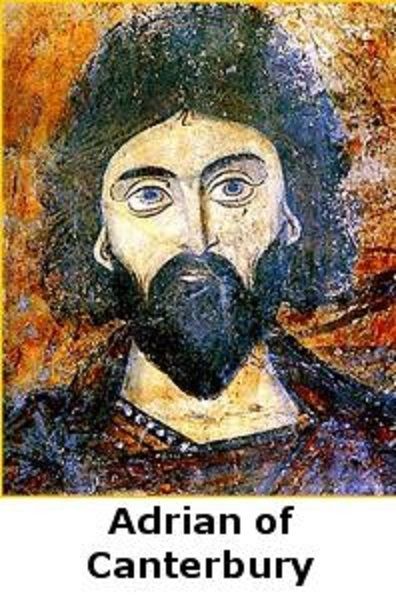710
The death of St Adrian of Canterbury
No part of the Roman Empire had been as hard hit by the barbarian invasions as Britain. Waves of Germanic invaders from the east, Picts from the north, and Irish from the west had come close to completely extinguishing civilization on the island. City life was abandoned, the money economy virtually disappeared, and literacy was extremely rare; the native Christian church fled into the remoter areas. Only around the year 600 was there an attempt by Rome to evangelize the pagan Anglo-Saxon colonists. Though a toe-hold was established around Canterbury in the southeast, the mission to the Germanic kingdoms was a slow and dangerous one. One reason that it succeeded was that Christianity offered these barbarians ties with the re-emerging European civilization, as represented by the Church.
We can see this, for example, in the arrival in England in 669 of Theodore of Tarsus as the new Archbishop of Canterbury. Born at the eastern end of the Mediterranean, he was not Pope Vitalian’s first choice for the post — that fell on the North African monk Adrian who instead recommended Theodore. The pope agreed, provided that Adrian accompany the expedition. He did so and was made abbot of the monastery in Canterbury. Together Adrian and Theodore consolidated Roman influence, developed schools teaching astronomy, music, Roman law, Greek, and Latin. They improved the education of the clergy, making them less the servants of their families or their localities and more the representatives of an international organization. They imported foreign craftsmen, such as glass-makers and builders and artists as well as foreign-produced books. Under Adrian the monastery became a centre of learning and the task of recivilizing Britain was advanced.
